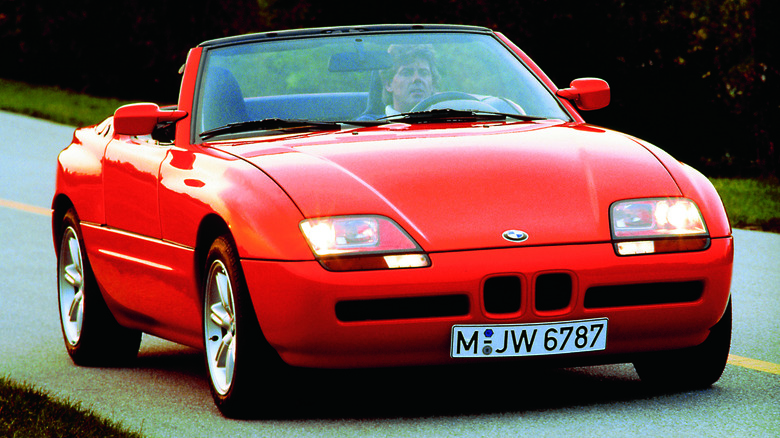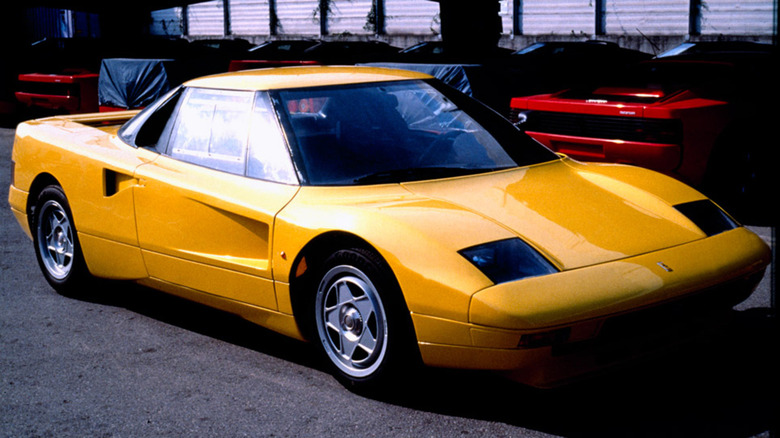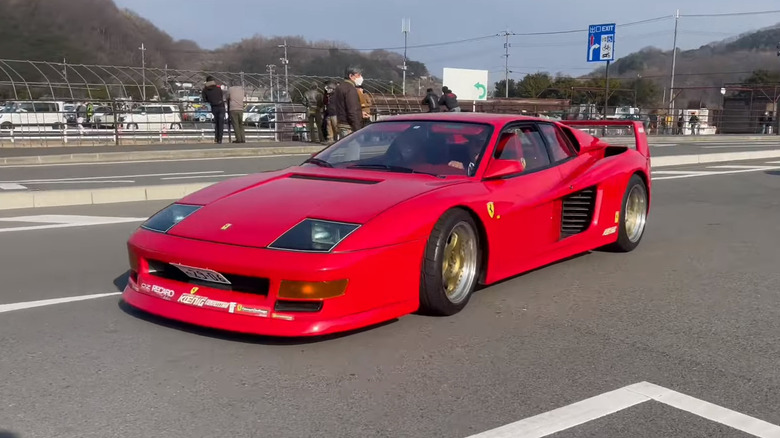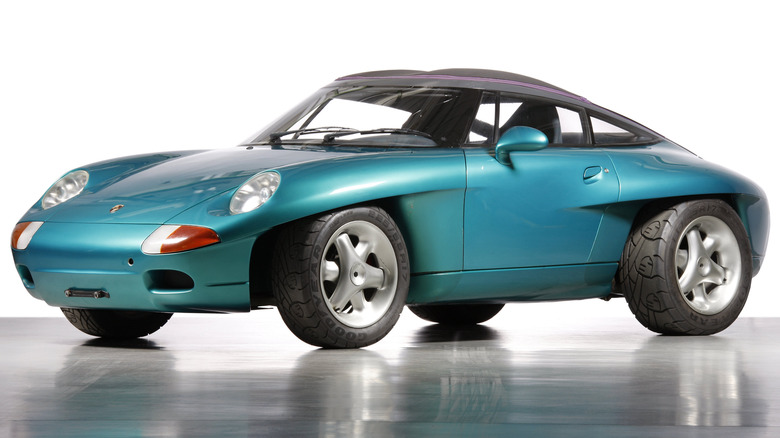

15 Awesome 80s Cars That People Completely Forget About
source link: https://www.slashgear.com/1324317/awesome-80s-cars-people-forget-about/
Go to the source link to view the article. You can view the picture content, updated content and better typesetting reading experience. If the link is broken, please click the button below to view the snapshot at that time.
15 Awesome 80s Cars That People Completely Forget About
The '80s were a decade of major innovation from carmakers, with many releasing cars that would end up defining their legacies up to the present day. Ferrari unveiled the F40 in 1987, which remains one of the most iconic supercars in the world, while on the other end of the automotive spectrum, Plymouth essentially invented the popular minivan segment with the 1984 Voyager. The idea of four-wheel drive was also starting to become more mainstream in this period, with the 1980 Audi Quattro proving just how effective it could be when used in a performance car. There are countless other examples.
However, just like any other decade, not every cool car from the era is as well-remembered. There were plenty of ill-fated projects, one-offs, and limited-run specials that have slipped into obscurity — even if, in some cases, they were just as groundbreaking as the decade's biggest icons when they were unveiled. Here, we're taking a look back at 15 of those cool forgotten cars.
Porsche 961
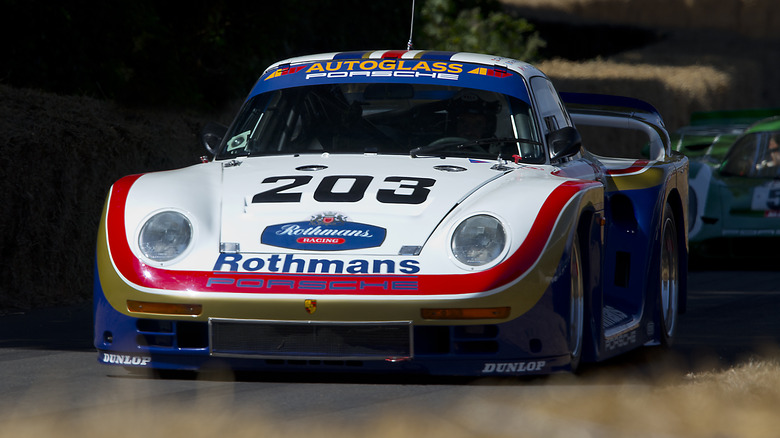
The 959 is one of Porsche's most iconic cars, with multiple variants that include the record-breaking road car and the legendary 959 Paris-Dakar. However, a lesser-known car also spawned from the 959 program: the one-off 961, which was in essence a race-ready 959 with some further tweaks made for improved performance. A revised engine was developed for the car which produced up to 680 horsepower in its most powerful configuration, and the four-wheel drive system was reworked to make the 961 handle more like a rear-drive car than its roadgoing counterpart.
The car was stripped down in a bid to save every ounce of weight, and a new, wider bodyshell was developed for optimal airflow. It made its racing debut at the 1986 24 Hours of Le Mans, becoming the first four-wheel drive car ever to take to the grid. After finishing in a respectable seventh place, Porsche continued to compete in various other endurance events throughout the following year, with underwhelming results. The 961 was entered again in the 1987 running of Le Mans, but this would prove to be its last race. After driver Kees Nierop collided with a barrier, the car caught fire on track and suffered significant damage. The car was eventually restored by Porsche and is now on display at the brand's museum in Stuttgart, Germany.
Dodge Conquest/Mitsubishi Starion
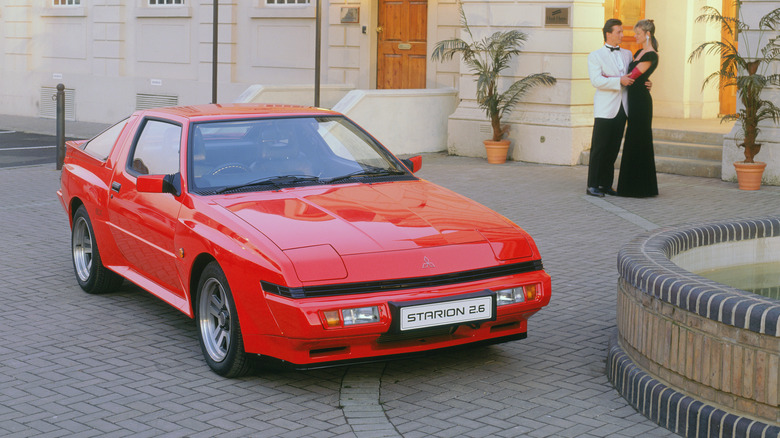
Chrysler first bought a stake in Mitsubishi in 1971, and over the following decade, the two companies gradually increased their ties. By the early '80s, Mitsubishi wanted a car that could compete with sporty offerings from rival Japanese manufacturers like Mazda, Toyota, and Nissan, and so the Starion was born. The new two-door coupe featured a turbocharged four-cylinder engine, a five-speed manual transmission, and sharp styling.
Chrysler saw potential in this new design and began importing it into the U.S. under a variety of badge-engineered names, including the Dodge and Plymouth Conquest. Production of the car continued throughout the '80s, eventually ending in 1989. Despite boasting impressive performance figures and luxuries like automatic climate control, the Starion/Conquest never gained the same following as rivals like the Mazda RX-7 or Toyota Supra, leaving it to be forgotten as its rivals carved out legacies as stalwarts of the JDM scene.
Ferrari 408 4RM
All-wheel drive systems can be found today in all manner of cars, from performance cars to family-hauling crossovers, but back in the early '80s, only off-road focused SUVs and rally cars sent power to all four wheels. However, engineers at Ferrari had a radical idea: what about putting four-wheel drive in a supercar? Celebrated designer Mauro Forghieri was put in charge of the project, and by 1987, the first prototype of the 408 4RM emerged from Ferrari's development workshop.
The resulting car was awkwardly proportioned because of the extra space needed to accommodate the four-wheel drive system, although it still looked distinctly Ferrari-like. A second prototype was also completed, and development work on the cars continued until 1991, when the bosses decided that the system was too heavy to justify a production version. However, the patented four-wheel drive system that underpinned the 408 4RM would eventually debut in production form around two decades later with the 2011 FF. The original '80s prototypes, meanwhile, remained as a largely forgotten chapter of Ferrari's history, although one of the two original cars is now on display at the Galleria Ferrari in Maranello.
Suzuki Alto Works
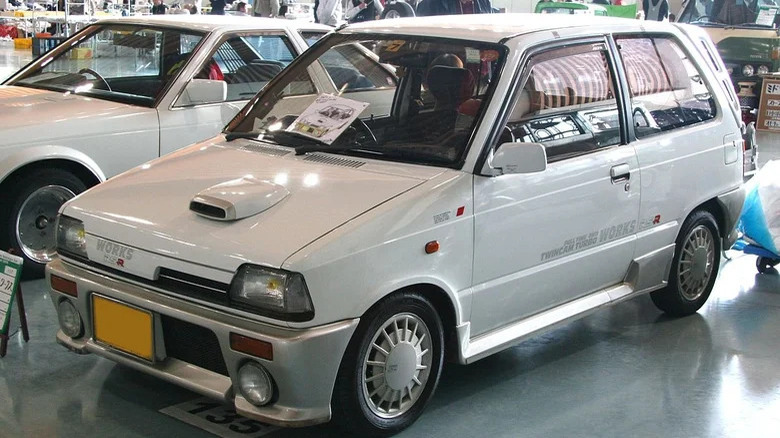
The kei car is a tiny class of Japanese automobile designed to take advantage of the country's tax regulations, where the smallest cars benefit from generous tax breaks. In recent years, they've also become increasingly popular in the U.S., and there are now plenty of affordable ways to get your hands on one. Models like the Honda Beat, Suzuki Cappuccino, and Autozam AZ-1 have emerged as the most popular kei cars among enthusiasts, but there's another, lesser-known sporty alternative that's just as cool: the Mitsubishi Alto Works.
Mitsubishi had already seen commercial success with the regular version of the Alto, but decided to create a more powerful version of the car aimed at hot hatch buyers. The resulting Alto Works was lauded as the fastest kei car ever built at the time of its launch. To ensure everyone knew just how fast it was, Mitsubishi added a body kit, a scoop on the hood, and sports decals all over the car. In top-spec form, the car even got all-wheel drive, with its light overall curb weight making it surprisingly zippy. The Alto Works line continued over three generations and lasted well into the '90s, but the original '80s generation is arguably still the funkiest of the bunch.
[Featured image by TTTNIS via Wikimedia Commons | Cropped and scaled | CC0 1.0]
BMW Z1
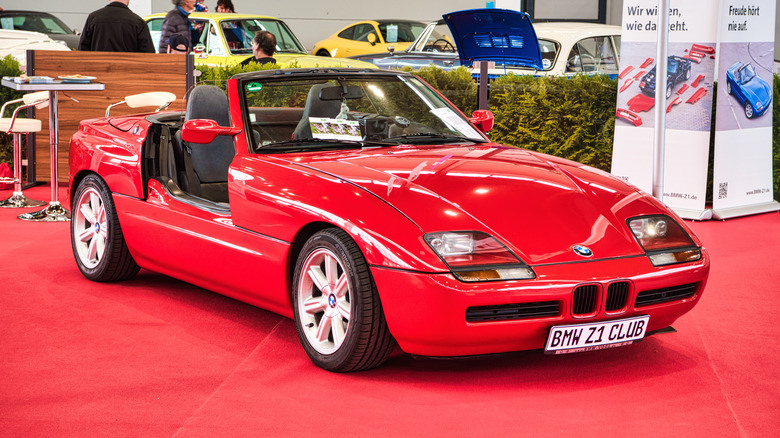
In the mid-'80s, BMW decided to set up a skunkworks division, organized to create radical new concepts free from the usual bureaucracy of a major car manufacturer. The division was named BMW Technik, and its first product was the BMW Z1, a sports car that was unlike anything else on the market. Initially, the car was only supposed to be a design study, but company bosses liked the concept so much that they approved a limited production run. In total, 8,000 units would eventually be built.
The Z1 was packed full of unique design features, including sliding doors that lowered vertically rather than opening outwards, as well as plastic body panels that could be removed and swapped when the owner wanted to change the color of the car. The success of the Z1 encouraged BMW to explore the idea of a more mass-market roadster, which eventually led to the creation of the Z3. However, with its low production numbers and cult classic status, the Z1 has been gradually forgotten about over time, even though it's arguably one of the most unique BMWs to ever roll off the production line.
HSV Commodore SS Group A SV
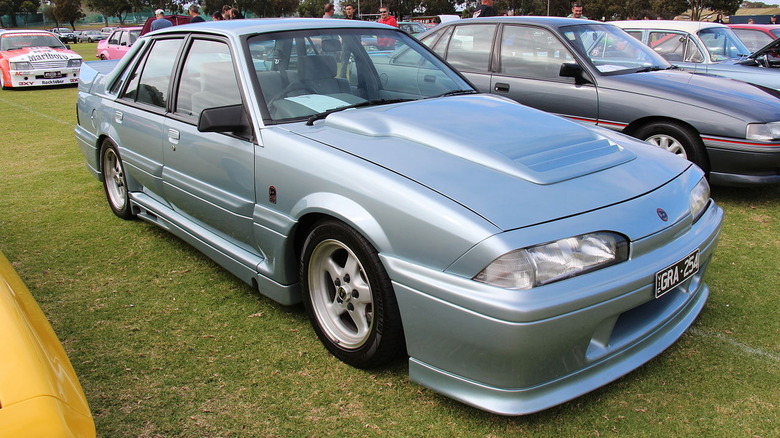
While it's an icon in its home country of Australia, the HSV Commodore SS Group A SV, or "Walky," has remained largely forgotten about in other parts of the world. It was originally conceived as a homologation special to allow HSV (Holden Special Vehicles) to race in Group A, and originally, only 500 units were planned. However, demand for the 5.0L V8 four-door sedan with its wild aero kit was so strong that eventually 750 examples left the factory.
Its development could best be described as a "race-first" approach: Like most other homologation cars, it was initially built in competition form, and then adapted to meet the minimum requirements for road use. However, it still featured niceties like power steering and air conditioning, making it more readily usable on the road than many other such specials of the era. The car never raced outside of Australia, and its domestic competition results were mixed. Because of this, it's remained under the radar for most enthusiasts outside of Australia, even if it's a revered classic Down Under.
[Featured image by Sicnag via Wikimedia Commons | Cropped and scaled | CC BY-SA 4.0]
Aston Martin Vantage Zagato
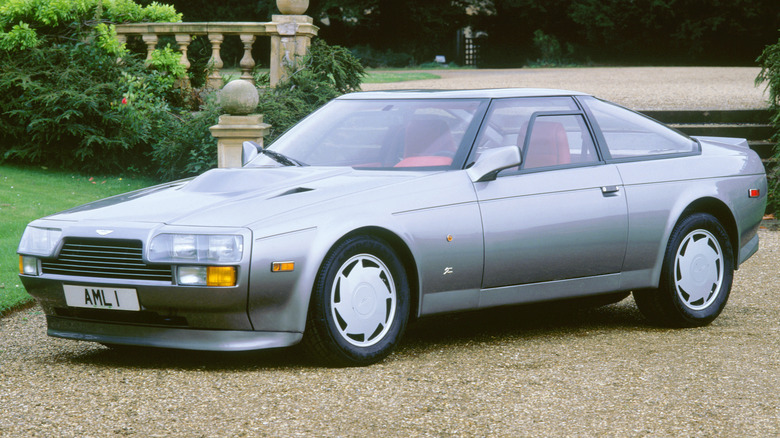
Aston Martin and Zagato had already been collaborating since the '50s, but in the early '80s, the British manufacturer gave the Italian design house its most challenging task yet: Take the V8 Vantage, already one of the most powerful cars of its kind, and make something that could take on the Porsche 959 and Ferrari 288 GTO. The result was a car less aesthetically pleasing than either of those two, but just as brutally fast. Zagato's makeover of the car was comprehensive: Its wheelbase was shrunk down, its bodywork was revised, and it was around 10% lighter than a standard Vantage.
A limited run of 50 units was planned, and all had been sold by the time the car was unveiled to the public at the 1986 Geneva Motor Show. Unlike the Ferrari and the Porsche, no effort was made to set a production car speed record, although an initial test of the prototype car saw a maximum speed of 185.52 mph, a few mph short of the 288 GTO. Perhaps this was what doomed the Aston to end up forgotten while its rivals have become icons. Either that, or it was the divisive styling. It might have been fast, but few could argue that the Vantage Zagato had an exceptionally pretty face.
Today, the Zagato is only marginally more valuable than the standard Vantage. Considering it was one of the fastest cars in the world at the time of its release, the Zagato seems criminally under-appreciated.
Ferrari Testarossa Koenig Special
Outlandish supercar tuning reached a peak in the Eighties, as wealthy owners were willing to pay eye-watering sums for the bragging rights of having the wildest or most powerful car. One of the most extreme examples of this was the Koenig Ferrari Testarossa, which produced up to 1,000 horsepower through its use of twin turbochargers. The bodywork was redesigned to look closer to the F40, and customers could choose any number of customizations to make the car lighter, more luxurious, or both.
The Koenig Specials were the ultimate symbols of over-the-top modification, and as the most powerful of them all, the Koenig Testarossa, was the crème de la crème. However, just as quickly as this modification style rose to the top, it fell out of favor. By the '90s, it was seen as laughably dated.
Ferrari purists would turn their nose up at such a car, and Willy Koenig's creations were seen as sleazy and unfashionable by just about everyone else. In recent years, however, there has been a slight resurgence in the popularity of the Koenig Specials, even if their heyday is undoubtedly long gone.
Toyota 222D
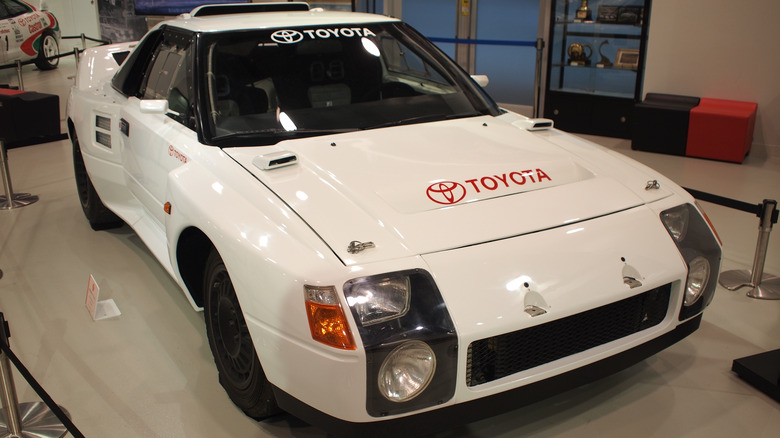
Toyota's rally legacy is second perhaps only to that of Lancia, but the Japanese manufacturer has encountered more than a few false starts along the way. Perhaps none more so than the 222D, the Group S rally car that was designed to beat the brand's rivals to the punch in development, only to be axed before it ever got to race.
With Group S regulations set to enter the rulebook for the 1987 season, Toyota decided to get a headstart on the competition and develop its new car a few years early. By 1985, it was almost totally finished: a heavily modified version of the MR2, with all-wheel drive and a unique race-bred engine.
However, a series of fatal accidents involving Group B cars in the 1985 WRC season saw rally bosses take the drastic step of banning not only all Group B cars after 1986, but also cancel the upcoming Group S altogether. Instead, less powerful Group A cars would become the top tier for rally competition. Being so late in development, there was no feasible way to get the 222D to meet the new Group A regulations, leaving it essentially useless.
Monteverdi Safari
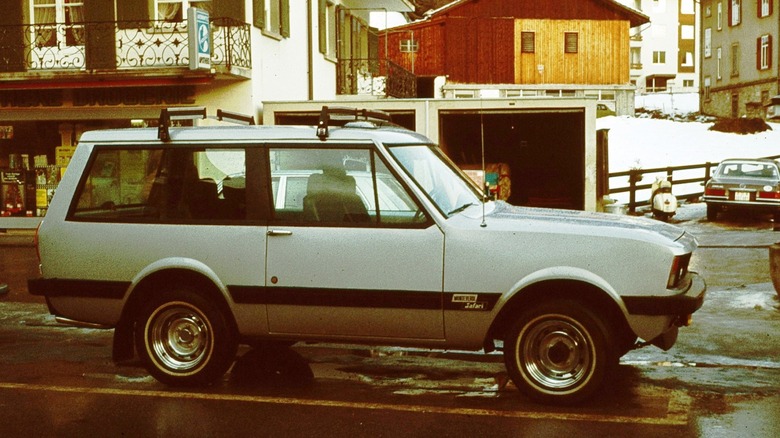
Although the Monteverde Safari was originally unveiled in the mid-'70s, production continued until 1982, so we're including it as an '80s car. From the outside, you might be forgiven for thinking this was a run-of-the-mill SUV, but in fact, it was a trailblazer in more ways than one. Designed by Swiss entrepreneur Peter Monteverdi, the car was designed to offer unprecedented levels of luxury for an SUV, with an interior decked out in the kind of lavish materials you'd expect to find in the finest Mercedes of the era.
The idea of a luxury SUV wasn't entirely new, since the Range Rover had been around since the early '70s, but the Safari was a step above anything that the British marque could offer. It was more refined on the asphalt than the Range Rover too, not to mention a lot more expensive.
Monteverdi's lavish SUV proved to be reasonably popular, but it wasn't enough for the company to stay afloat, and it declared bankruptcy in 1984. The Monteverdi marque was far from a household name to begin with, but in the years since, the Swiss company has been all but totally forgotten by enthusiasts.
[Featured image by Charles01 via Wikimedia Commons | Cropped and scaled | CC BY-SA 3.0]
Porsche Panamericana
Unveiled at the 1989 Frankfurt Motor Show, the Porsche Panamericana sported a head-turning new design that took the hallmarks of the 911 and remixed them to create something very different to any Porsche before it. At first glance, it might be easy to dismiss it as simply a styling exercise, only ever meant for the auto show circuit. However, the Panamericana is in fact a fully-functional one-off special that was presented to company chairman Ferdinand "Ferry" Porsche as an 80th birthday present.
It sported a 3.6L six-cylinder engine making 250 horsepower, and a unique soft-top roof that could be opened with a zipper. It was fully road-legal and was registered with German plates, although today it resides safely in the company's museum in Stuttgart. Even though the Panamericana was only ever intended to be a one-off, the styling influences from the car can be seen on several later Porsche production models. For example, the design of the 911 Targa's roof was heavily influenced by the Panamericana, according to Porsche, and the Boxster also drew design inspiration from the car.
Ford EXP
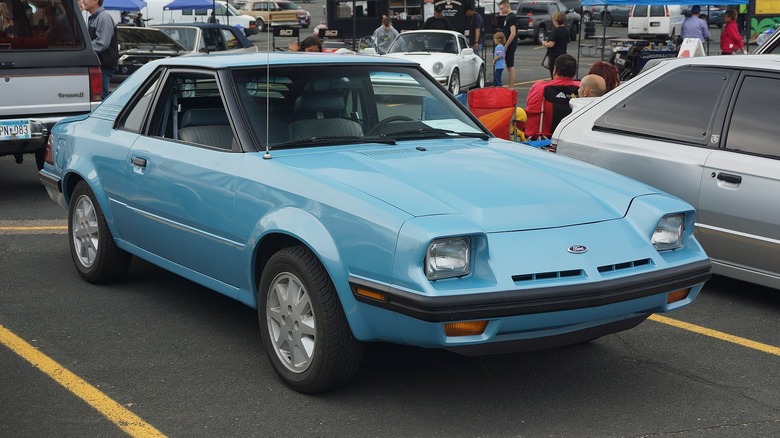
Despite selling well during its initial production run between 1981 and 1985, the first-generation Ford EXP is a rare sight on the roads today. It was positioned as a sportier alternative to the Escort, albeit without any power upgrades. The Ford EXP wasn't fast by any stretch of the imagination, but it was still seen as being more upmarket than its budget-oriented stablemate, and aimed at image-conscious buyers.
However, the vehicle's largely unremarkable nature meant that it eventually fell into obscurity. Few people cared about the car enough to preserve it over the decades, with most examples being sent to the scrapheap after their years of active service. It might not have been a collectors' item, but the EXP is a reminder of a segment that's largely disappeared with the rise of the SUV: the sporty(ish) two-door. For that, it deserves more than to be simply consigned to the archives.
[Featured image by Greg Gjerdingen via Wikimedia Commons | Cropped and scaled | CC BY 2.0]
Lamborghini Jalpa
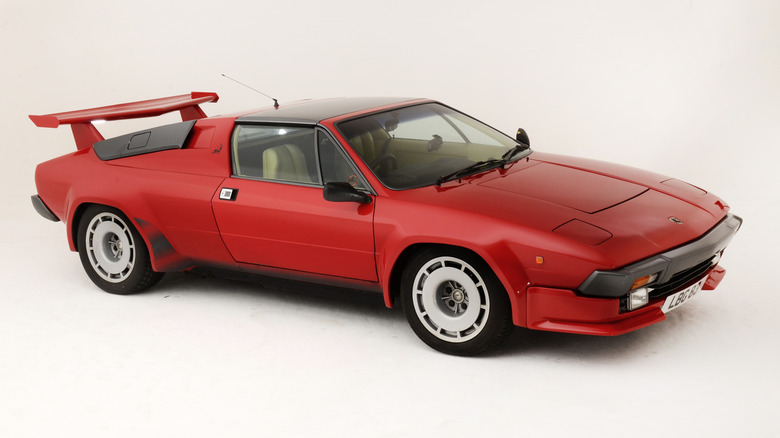
The idea of a "sensible" Lamborghini is not so alien today, since the Urus SUV is comfortably the best-selling model in the brand's current lineup, and it's arguably the most family-friendly car the brand has ever built. However, during the '80s, Lamborghini was renowned for the Countach, which is about as far away from sensible as it's possible to get. In an effort to expand its lineup in 1980, the brand unveiled the Jalpa, a more toned-down car that was an evolution of the Silhouette and featured an eight-cylinder engine, rather than the Countach's V12.
The Bertone-designed body was sleeker than the Jalpa's predecessor, and it was more comfortable inside, but the car only saw limited success. A total of 420 cars were built between 1981 and 1988, when Lamborghini decided to axe its entry-level model altogether due to low demand. The Jalpa remains one of the most obscure Lambo models today, even if it holds the distinction of being the last V8-powered model until the introduction of the Urus.
Porsche 924 Carrera GTR
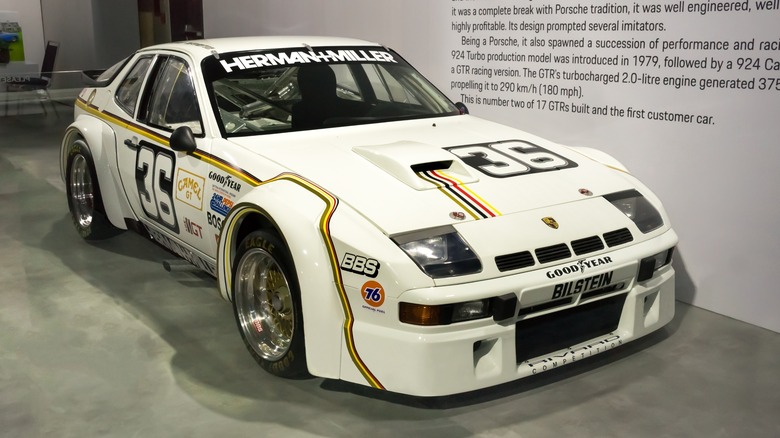
The 924 proved to be a bestseller for Porsche in the late '70s, but there was significant demand for a faster, more race-ready version. The 924 Carrera GTR, unveiled in 1980, satisfied most of that demand. It also allowed to race the car under Group 4 regulations, but it still wasn't quite enough for some. And so, Porsche built just 17 customer examples of its factory Le Mans 924 GTR race car, around half of which went on to compete at the famed endurance race as privateer entries.
The GTR benefitted from wide fender flares that hid endurance-spec wheels, with optional turbine wheel covers to increase the performance of the brakes. The interior was as stripped-out as possible, although customer GTRs got two seats while the factory cars only featured one. The customer cars featured engines that were slightly detuned compared to the works versions, but were still significantly more powerful than any other 924.
The car's rarity means it's not well remembered today, but the remaining examples are highly sought after by collectors. One in excellent condition sold at an RM Sotheby's auction in 2021 for $406,500.
Shelby GLH-S
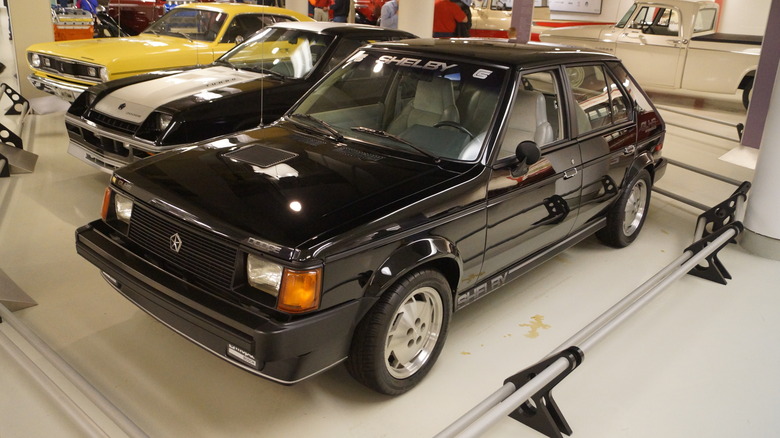
Hot hatches were all the rage in Europe during the '80s, and America was just beginning to catch on to the trend. Dodge didn't have a car even remotely suitable for hot hatch conversion, but it tasked Carroll Shelby to create one out of the Omni anyway. The result was the Shelby GLH-S, a limited run performance hatch with 175 horsepower and endearingly boxy styling. Although the car generated positive reviews from the motoring press when it first launched, it failed to popularize the hot hatch in America in the same way that the Golf GTi had done across the pond.
Nonetheless, it packed the power and the handling to go toe-to-toe with the big Euro players, even if it didn't quite take off with buyers. The lukewarm commercial reception to the car put Dodge off attempting to build a successor, and the company never ventured back into the hot hatch segment. Its mostly forgotten status makes the Shelby GLH-S one of the cheapest authentic Shelbys to buy today, even if it's a far cry from the Cobras and Mustangs most people associate with Carroll Shelby's name.
[Featured image by Greg Gjerdingen via Wikimedia Commons | Cropped and scaled | CC BY 2.0]
Recommend
About Joyk
Aggregate valuable and interesting links.
Joyk means Joy of geeK
